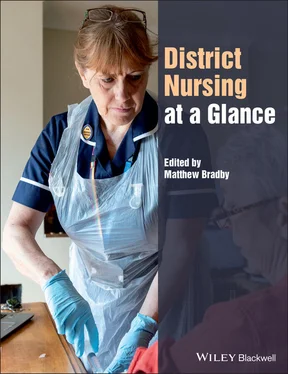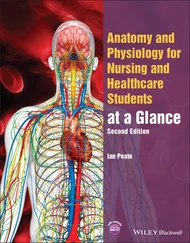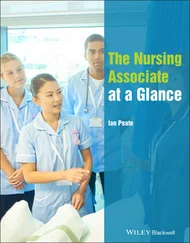1 Cover
2 Title Page
3 Copyright Page
4 Dedication Page
5 Preface Additional sources of information
6 Acknowledgements
7 Introduction to District Nursing
8 Part 1: Introduction 1 The early history of district nursing 2 History of the Queen’s Nursing Institute
9 Part 2: The learning environment 3 Preparation for a learning environment in the community Individual learning The environment of care Clinical staff 4 Providing student placements in the community 5 Supporting nursing students in the community Year 1 placement Year 2 Year 3 6 Mentorship and preceptorship Preceptorship Mentorship
10 Part 3: Working in the community 7 The role of the district nurse: autonomous practice Novice to expert Autonomous practice Physical examination and prescribing Summary 8 Evidence‐based practice Limitations in practice Accessing resources What constitutes good evidence? 9 Communication Family and carers Mobile technology 10 Initial assessment and collaborative working The multidisciplinary team Assessment and referral The third sector and carers 11 Safer caseloads: service planning and caseload allocation Patient demand Safer caseloads The process of caseload allocation Conclusion 12 Skill mix in the community Healthcare assistant Assistant practitioner/associate practitioner Nursing associate Community staff nurse District nurse Advanced nurse practitioner Conclusion 13 Nurse prescribing Nurse independent/supplementary prescriber Governance The future of non‐medical prescribing Medicines optimisation 14 Medicines management Medicines policies Medicines administration Community‐specific issues 15 Patient documentation Patient access 16 Risk management Risk scoring or grading Example 17 Measuring quality and patient outcomes Defining quality Understanding the patient experience Measuring quality 18 Caring for yourself in the community setting Travel Lone working Time management Mental wellbeing Clinical supervision Physical wellbeing
11 Part 4: Caring for the whole person in the community 19 How to make every contact count: health chat 20 Cultural issues associated with district nursing Culture and ethnicity Diversity and personal values The culture of district nursing 21 Social isolation and loneliness 22 Health inequalities and engaging vulnerable groups Effects of health inequalities ‘Hard to reach’ groups 23 Hygiene in the home, infection prevention and control Patient factors Transmission by indirect contact Equipment and fomites 24 Substance and alcohol dependence Substance misuse Alcohol dependence Care, management and prevention 25 Safety in the home, including falls prevention 26 Effective discharge planning Planned care Patient‐centred care 27 Encouraging patient concordance 28 Community health equipment services Supply of equipment Prescribing Delivery of equipment Equipment for moving and handling 29 The use of new technology to assist daily living in the home Understanding the health and social care landscape Associated definitions and terminology 30 Use of mobile technology to support practice Improving efficiency and creating capacity Patients as partners Evolving solutions Time to care 31 Patient care in nursing homes Demographics and regulation Complex care: pain and dementia Hospice at home 32 Person‐centred dementia care Dementia Development of a person‐centred dementia care approach Role of the district nurse Why is there a need for person‐centred dementia care? Admission to the community and hospital sector 33 Safeguarding Types of abuse Assessment Making a referral Carers and safeguarding The Mental Capacity Act 2005 34 Supporting carers The needs of carers Partnership working Assessment of carer needs Summary 35 Supporting young carers and older carers Caring through the life course The impact on carers Young carers 36 Palliative care Palliative care in practice – example Palliative care in district nursing Other palliative care services 37 Spirituality Benefits of spirituality Barriers to integrating spirituality into practice Facilitators for integrating spirituality into practice 38 Bereavement Family bereavement Role of the district nurse in bereavement care Bereavement help for district nurses
12 Part 5: Physical and mental health in the community 39 Holistic nursing assessment in the community Environment Family and culture Communication Future plans and expectations 40 Baseline observations Safety netting 41 Long‐term conditions and co‐morbidities Disease pyramid Self‐management Integrated health and social care planning House of care Mental health 42 Hydration The uses of water in the body Fluid and electrolyte balance Nursing considerations for the client presenting with dehydration 43 Nutrition in the community setting including enteral feeding Balanced diet Obesity Undernutrition Identification and screening Enteral feeding 44 Kidney/renal health Key anatomical points Kidneys and ageing Community‐specific considerations 45 Skin assessment Assessing a patient presenting with a rash Clinical examination Coping with the skin condition 46 Continence Role of the district nurse Diagnoses/types of incontinence Conclusion 47 Constipation Prevalence Predisposing factors Diagnosis Complications Management Medication Good clinical practice 48 Catheter care Assessment and documentation Consent Balloon inflation Catheter insertion Drainage bags Fixation and support Self‐care Sex and catheters Catheter‐associated urinary tract infection Troubleshooting 49 Recognising lymphoedema, lipoedema and chronic oedema in the community The lymphatic system Lymphoedema Lipoedema Chronic oedema Assessment, diagnosis and treatment 50 Pressure ulcer prevention Risk factors Interventions Concordance and safeguarding 51 Lower leg ulceration Anatomy and physiology Presentation and assessment Management of leg ulceration Conclusion 52 Management of type 2 diabetes in the older person: using the International Diabetes Federation Guidelines in practice Challenges when caring for an elderly person with type 2 diabetes Care planning Self‐management of type 2 diabetes 53 Ischaemic heart disease What is ischaemic (or coronary) heart disease? Causes Risk factors for atherosclerosis Symptoms Treatment Preventing complications of coronary heart disease Tips for district nurses on assessment of patient 54 Respiratory health Factors affecting respiratory health Improving respiratory health Management of respiratory health 55 Chronic obstructive pulmonary disease What is COPD? Symptoms Diagnosis COPD exacerbations Treatments 56 End‐stage respiratory care in the community Clinical indicators of advanced lung disease Why do patients with end stage disease suffer from uncontrolled symptoms? Treatment of symptoms Other drugs commonly used for both breathlessness and anxiety 57 Neurological conditions Paralysis Motor neurone disease Parkinson’s disease Role of the district nurse 58 Multiple sclerosis Diagnosis Symptoms Treatment and therapies 59 Cancer as a chronic condition Holistic assessment Late effects of treatment Emotional needs Financial needs 60 Mental illness Common types of depression Common types of anxiety 61 Assessing mental capacity What is meant by incapacity? The Mental Capacity Act (2005) Who should assess capacity? What is the test of capacity? Making decisions in a person’s best Interests Lasting power of attorney and enduring power of attorney Professional record‐keeping 62 Dementia Alzheimer’s disease Vascular dementia Lewy body dementia Rarer causes of dementia 63 Learning disability Community learning disability teams Hospital liaison nurse
13 Part 6: Introduction 64 Specialist nurses and the role of district nurses in coordinating care Core role of the district nurse Working with specialist nurses and services Summary 65 Voluntary organisations and district nurses 66 Occupational health: specialist community public health nurses Specialist role Synergistic working Future expectations 67 Community learning disability nursing Case study 68 Tuberculosis nursing Epidemiology Clinical features Acquisition Diagnosis Treatment Vaccination District nursing role 69 Prison nursing Prison environment New arrivals Mental health Health promotion 70 Nursing in defence primary healthcare Defence primary healthcare Health maintenance Military operations Families 71 Homeless and inclusion health nursing Homelessness Impact on health Engagement and effective working End‐of‐life care 72 Gardens, health and district nurses
Читать дальше












